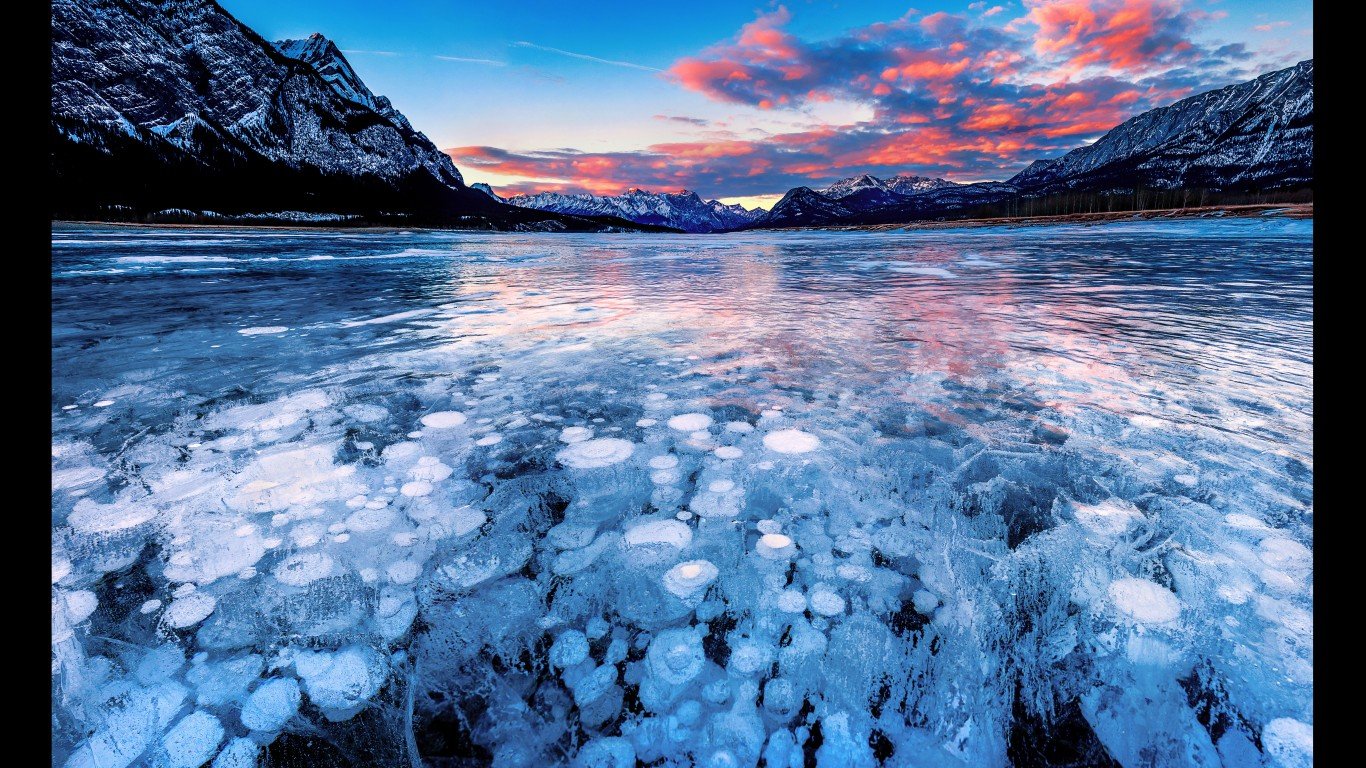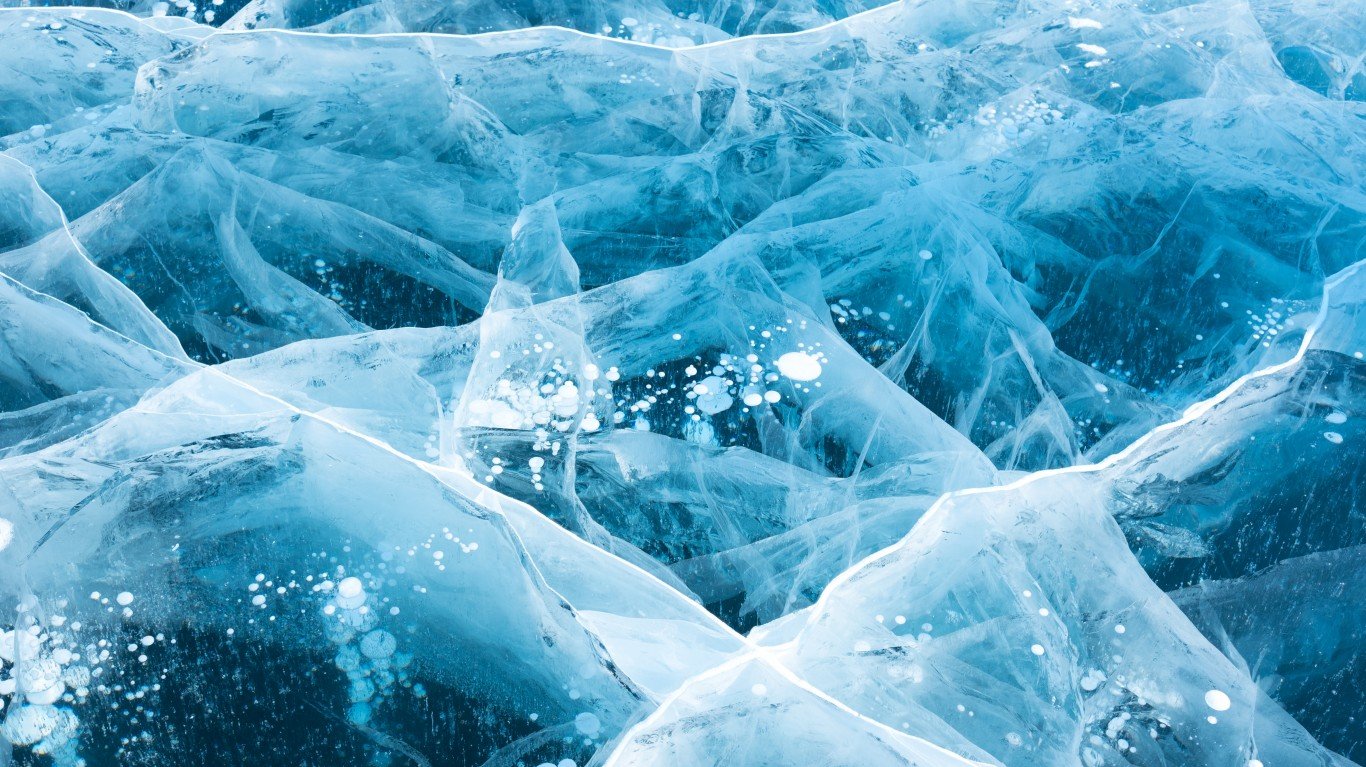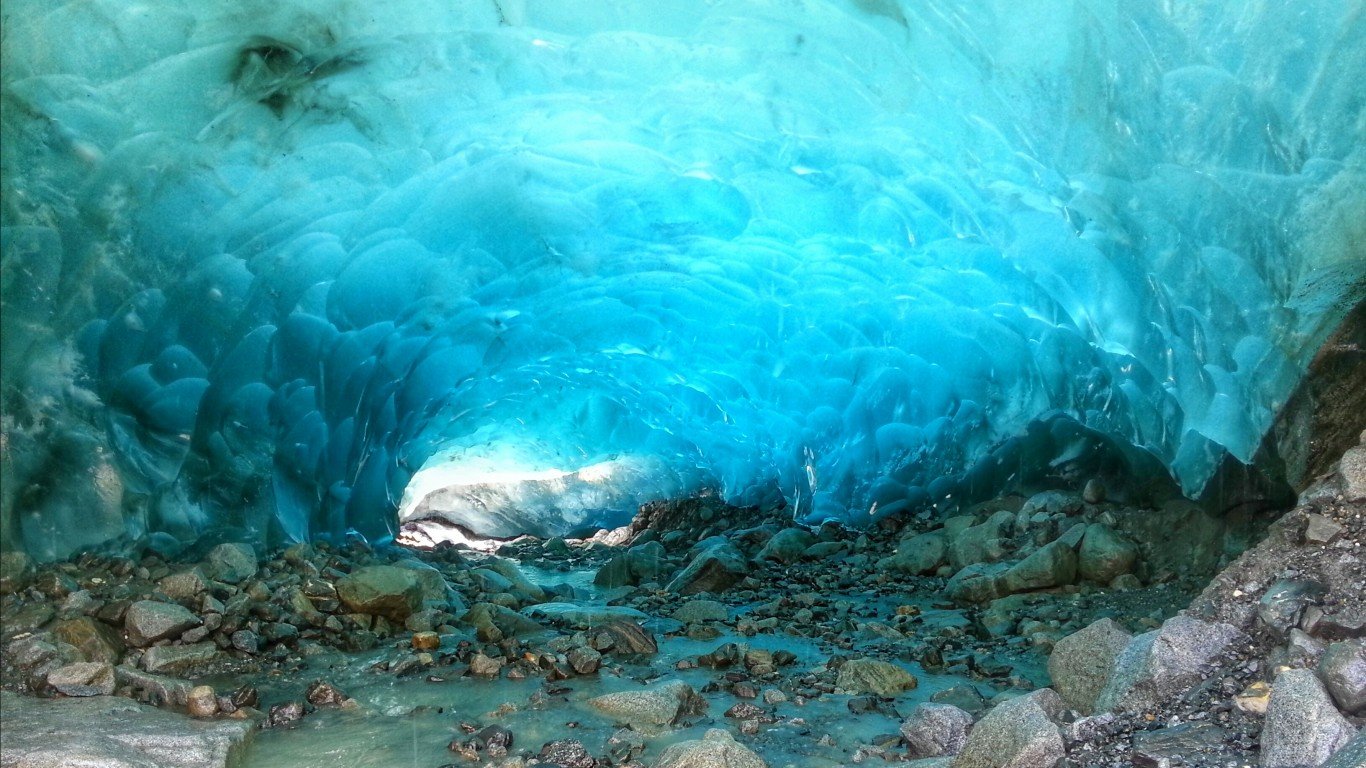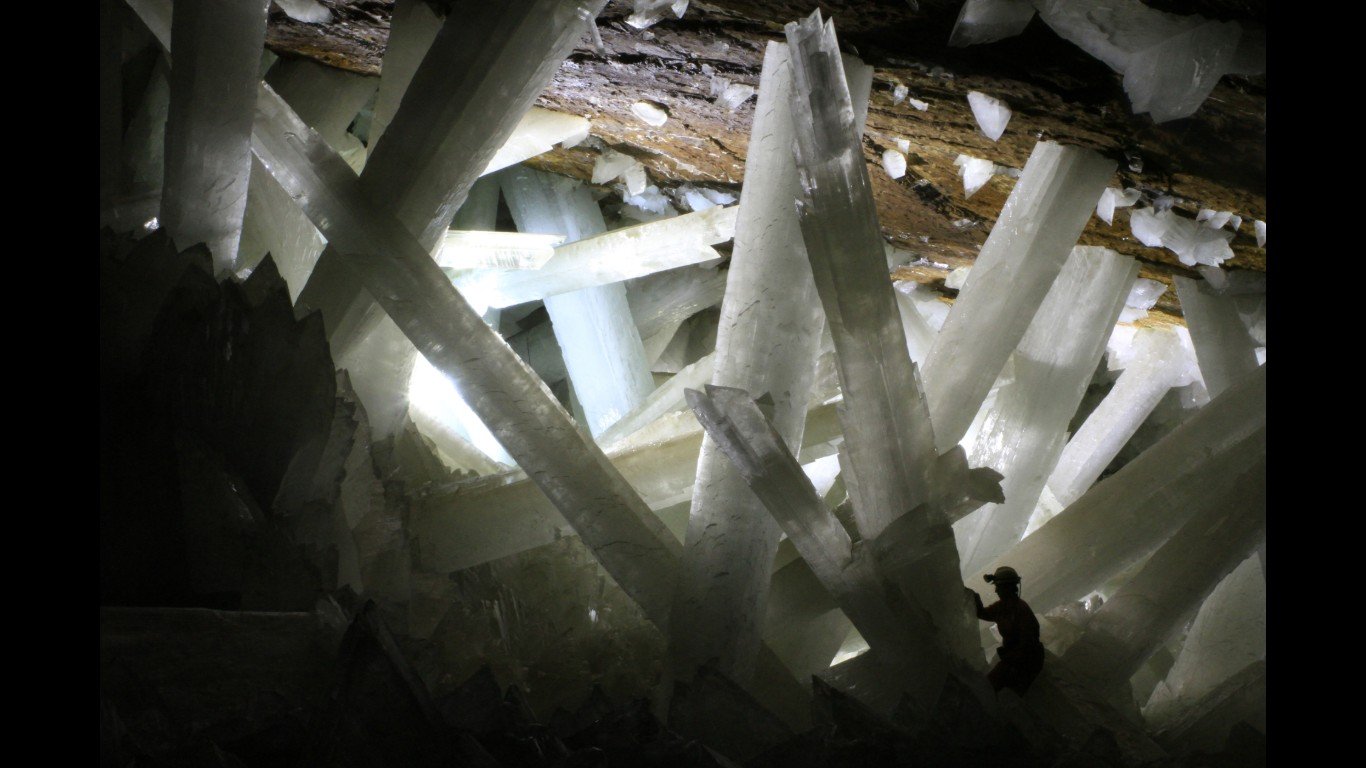
46. Abraham Lake
> Location: Canada
A man-made reservoir in Alberta, Abraham Lake freezes over in the winter like any other northern lake. What distinguishes this natural wonder are pockets of methane gas that rise up from under the lake to form stacks of frozen underwater bubbles near the surface.

47. Zhangye Danxia National Geological Park
> Location: China
The multicolored, striped landforms at Zhangye Danxia were formed after layers of sandstone and minerals, pressed together over 24 million years, were buckled by tectonic action, then worn away by thousands of years of erosion.
48. Cave of Crystals
> Location: Mexico
This cavern full of giant crystals in Mexico was discovered in 2000 by miners after they pumped water out of a cave nearly 1,000 feet under the Sierra de Naica Mountain. The largest of the selenite crystals, which grew uninterrupted for at least half a million years, are 36 feet long and three feet thick.

49. Lake Baikal
> Location: Russia
An ancient, massive lake, Baikal is considered the deepest and cleanest lake on earth. When frozen, the lake’s incredibly transparent ice forms bubbles, cracks, and other impressive patterns, while also allowing visibility as deep as 130 feet.

50. Mendenhall Ice Caves
> Location: Alaska
Inside a partially hollow 12-mile long glacier, the Mendenhall Ice Caves near Juneau are only accessible by first kayaking to the edge, then climbing over the glacier. Fast-rising ocean temperatures in recent decades have contributed to the Mendenhall glacier receding by almost two miles since 1958.

 24/7 Tempo
24/7 Tempo





